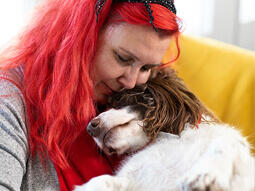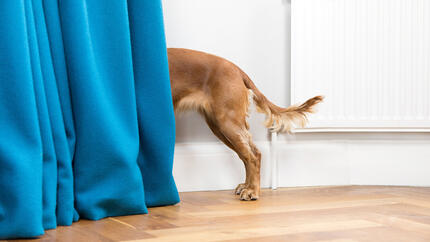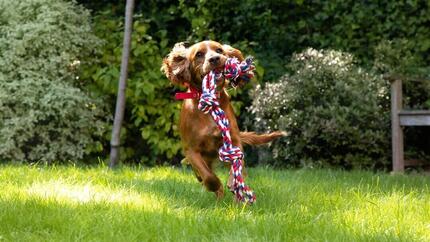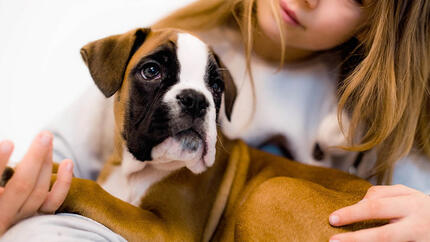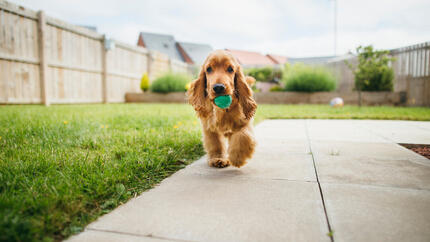

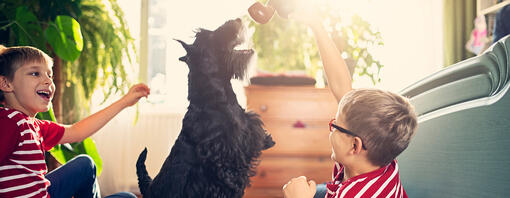
Today, there are so many types of dog toys available that it can sometimes be difficult to choose which ones to get. Where do you begin? What will be both fun and educational for your dog? All pet owners face these questions when they first consider buying dog toys, and it can be hard to find answers.
In this article, we’ve put together a simple guide to help you get started when it comes to choosing the best dog toys.
Best dog toys
The very best toy for your dog is the ones that your dog loves! There is no point in spending lots of money to get the very best dog toys on the market if your dog won’t play with them!
Just like us humans, every dog is different, so it is up to you to spend some time finding out just what your dog enjoys. And the good news is that it doesn’t have to cost a fortune to keep your dog entertained and enrich their lives.
The best place to start is by thinking about your dog’s breed or type. Every dog was bred to do a certain job, and what that job was can often give you some great clues to what games they are going to love playing and so what toys will work best for them.
As examples, retrievers usually love to play with toys you can throw and that they can bring back to you. Dogs bred to follow a scent with their nose love sniffing games. Terriers often love tugging, ripping and tearing games.
And some dogs are mouth focused and others like to use their paws…
While breed is a good starting point, never forget that all dogs are different – even within the one breed.
Types of dog toys
Balls
These are historically popular with dogs and with owners alike – as they are easy to throw, cheap to buy and plentiful to find. You can choose a soft plush ball if your dog is young and teething or is in their veteran years, or a tennis ball that has a slightly harder exterior if your dog is and adult – and if that won’t be too small for them.
You can find them with squeaks in them too – just to make them even more enticing.
Rope toys
This toys feature a rope that your dog can easily get hold of and chew on if they want. You can also hold the rope end of the toy for some great games of tug of war. Dogs love these toys as for many they suit their natural way of playing and gives them a choice of how to pick them up and carry them.
Stuffed toys
These toys are soft, which means they are safe (as long as they don’t have beads or plastic bits) and so won’t injure your dog’s mouth. They can be found in many shapes, sizes, and colours – and both with and without squeakers. These are often a puppy’s first toy and they can grow very attached to them! Other dogs (terriers… we’re looking at you!) tend to prefer to rip them apart so for them they are not a good choice unless you can find the indestructible ones that seem to be appearing on the market (although they tend to be canvas rather than plush).
Chew toys
It is natural for your dog to want to chew, even after they’ve finished teething. Chew toys for dogs ensure they chew something safe, and not your sofa or bed. These dog toys are usually made out of rubber and come in a variety of shapes and sizes Some of these can be stuffed with food and treats to make them even more enriching and rewarding to gnaw on. You can find softer ones for puppies and more robust ones for power chewers. Usually they are fully washable and long lasting.
Treat-dispensing dog toys
These are toys that contain treats for your dog. They can be filled and refilled with your dog’s favourite treat. Your dog then has to figure out how to use the toy to get to the treat. It ensures hours of fun for them as they twist and turn and chew the toy to get to the tasty treat. This can be great enrichment for your dog – but always make sure that your dog can get the food out even if it takes a bit of work. These toys are meant to be entertaining and fun, not frustrating!
Puzzle toys
These are toys that challenge your dog’s brainpower and help stimulate it. Usually they involve some canine problem solving of various degrees of difficulty in order to get treats. Sometimes that will involve using their mouth and other times their paws – and sometimes a combination. As your dog becomes an expert, you can increase the difficulty.
Homemade dog toys
Thankfully dog toys don’t have to be expensive – which can be a relief for people whose dogs love ripping and tearing type games! A lot of the time you can create an impromptu enrichment-style dog toy out of things that you have lying around the house that you might otherwise throw out.
Putting treats or bits of kibble inside a finished kitchen roll cardboard tube with the ends folded down can prove great fun – whether your dog delicately takes them out or just shreds them to get at the yummy contents.
A cardboard delivery box can be turned into a great game with treats and toys hidden inside.
An old towel can be scrunched up with treats hidden in the folds.
A plastic drinks bottle with the top removed can have bits of kibble placed inside.
As long as it is safe (remove any tape, staples etc), you’ll start to see lots of ‘dog toy’ opportunities that will create novelty and help make your life together far more fun!
Benefits of dog toys
Dogs need mental exercise as much as they do physical exercise. Some breeds were developed to work all day, to problem-solve, or do do specific tasks that required brain power as much as physical skills. This means that they can get bored easily or else get frustrated if they do not get the opportunity to have an outlet for their natural behaviours. Just walking your dog isn’t enough – no matter how much of a fitness freak you are!
A good dog toy stimulates your dog’s mind, improves their dexterity, and allows them to use their natural instincts, whether that is chasing, searching, foraging, or solving a problem.
Interactive toys and enrichment toys are ways to give your dog an outlet for their natural behaviours in a fun way that you can both enjoy. This prevents boredom and frustration, can have a positive effect on your dog’s behaviour, and helps improve the bond between you.
Safety with dog toys
It is important to choose toys for dogs that are the best fit for your particular pup. If your dog is small, a large toy will be unsuitable. It will not be much fun if they cannot bite the toy or move it around! If you have a large dog, a toy intended for small dogs could also pose a choking hazard.
You should also consider your dog’s health when choosing a toy. Look up the material of the toy and see if it is a good fit for your dog. Puppies, older dogs, flat-faced dogs or dogs with dental issues for example, may have a hard time with plastic treat-dispensing toys that they must chew and twist to get their treat. Dogs that love to chew will not have much fun with a soft and easily destructible dog toy.
Also buy dog toys that are age-appropriate. If your dog is a puppy and is teething, consider getting them a plush ball or a small toy they can bite safely. Be careful of buying your dog any toys that they can break off into smaller pieces, as they might swallow these and cause harm to their digestive system or cause serious intestinal blockages.
While throwing balls for your dog is probably the best-known game, these should be played with care. We now know that the hard acceleration, sudden stops and quick turns of repetitive fetch games can cause serious joint and pain issues. Also some dogs become balloholics – as it stimulates the internally-rewarded thrill of playing out their predatory sequence, and they can become so addicted that they are unable to concentrate or think about anything else on their walks. When hunting (or even playing at hunting) naturally, a dog will mooch about for a bit, suddenly spot something (“squirrel!”), give chase until it usually goes up a tree… and then go back to mooching again. It isn’t a constant and repetitive chase over and over again. So while we think fetch games are ‘natural’, they aren’t – and they certainly shouldn’t be used to tire your dog out in the shortest possible time! If your dog loves retrieve games, play them intermittently and only on some of your walks, interspersed with enjoying the countryside, sniffing, training exercises and other games. You can also play retrieve games where you hide things for your dog to find and bring back to you rather than throwing them. This is just as enriching for them but without the risk of joint and skeletal injury.
Choosing toys for dogs is not as difficult as it seems – the most important thing of all is to know your dog, and find toys that suit their personality. And remember, always buy dog toys that have been specifically designed for dogs – of have fun creating your own.
Related articles by Bakers

